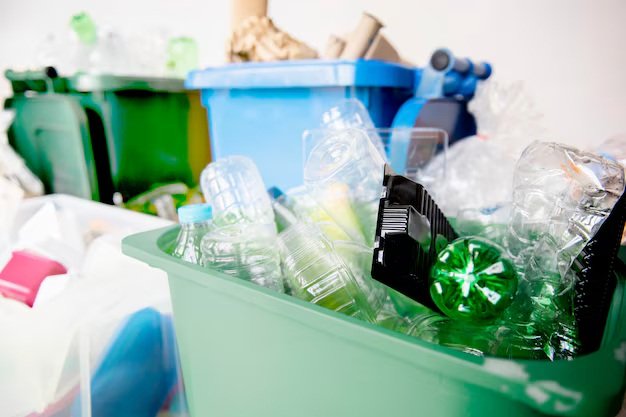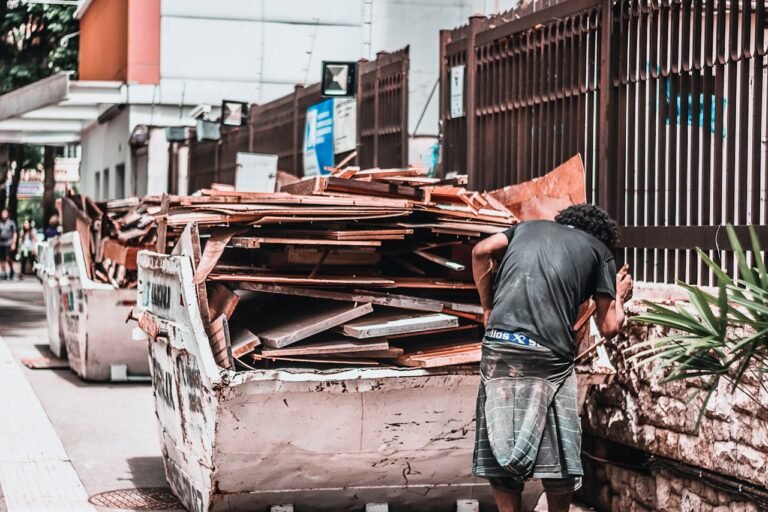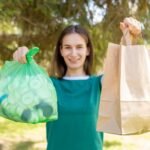Can Software Fix Bioplastic Recycling?
Bioplastics — plastics made from biological sources or designed to biodegrade — were supposed to be the cleaner alternative to oil-based plastics. Instead, as their use has grown, they have become a headache at many recycling and composting facilities. In mixed waste streams, items made from polylactic acid (PLA) or other “compostable” polymers can look and behave like conventional plastics, yet they melt at different temperatures, break down differently, or contaminate compost loads. This mismatch leaves recycling plants with harder decisions: accept lower-quality recyclate, remove contaminants by hand (slowing the line), or send material to landfill or incineration. According to the Commission for Environmental Cooperation, low levels of biodegradable plastic polymers are already contaminating conventional recycling streams and complicating processing.
Into that mess have stepped digital tools: sensors that “see” beyond colour and shape, machine learning models that learn the visual and spectral fingerprints of different polymers, and cloud platforms that log and refine sorting decisions. The promise is appealing: faster, cheaper, safer separation of bioplastics from conventional plastics so that each stream ends up where it belongs — true compostable waste to industrial composters, PLA to its own recycling or compost line, and PET/PP/HDPE to mechanical recycling. But promise and practice are different things, and the real question is whether software — cameras, spectroscopy and AI — can close the gap between product design and waste-system reality.

What Digital Sorting Tools Can and Can’t Do
Modern material recovery facilities (MRFs) already use near-infrared (NIR) optical sorters to separate PET, HDPE, PP and other resins. These systems detect material-specific absorption patterns in the near-infrared band and push items into the right stream. More advanced setups layer hyperspectral imaging (HSI) — which captures hundreds of narrow spectral bands — with machine learning to make finer distinctions, including identifying additives, surface contamination or subtle chemical differences. According to a body of academic studies, hyperspectral imaging combined with machine learning can reliably classify multiple polymer types and even detect compostable materials in simulated waste streams.
Commercial providers are already translating that research into working machines. TOMRA, a leading sorting equipment manufacturer, announced a deep-learning upgrade in 2024 that combines object recognition with spectral sensors to separate food-grade from non-food-grade plastics and improve purity levels beyond what NIR alone can achieve. TOMRA reported purity levels greater than 95% in pilot deployments and described field-proven installations at major plants across the UK and Europe. According to the report, this advancement uses deep learning to detect not just material type but also subtle cues—such as printing, staining, and shape—that help differentiate otherwise similar items.
Still, limits remain. Optical and spectral sensors struggle when materials are heavily soiled, wet, crumpled or in multilayer packaging. Black or heavily pigmented items once confounded many NIR systems because carbon black absorbs NIR; newer mid-wave infrared (MWIR) HSI approaches reduce that problem, but at higher equipment cost and complexity. Sensors also can’t fix upstream design choices: if a product is labelled “compostable” but cannot be composted in local facilities, no amount of sorting will render the product circular. In short, software raises the ceiling for what’s sort-able, but it does not eliminate the need for better product design, clearer labels, or changes in collection systems.
Real-World Tests
The technology’s human side matters. At a plant in the United Kingdom, operators who installed TOMRA’s deep-learning add-on reported faster belt speeds and fewer manual interventions on difficult PET/PP mixes. Operators described the relief of fewer cross-contaminated bales that previously forced entire loads into downcycling or disposal. Professor Edward Kosior of Nextek/NEXTLOOPP visited TOMRA’s test centre and described the system as a turning point for making high-purity, food-grade recycled polymers at scale — a practical example of technology changing the economics of reuse. According to TOMRA, early adopters have seen meaningful operational improvements.
But other real experiences show friction. Composting facilities in North America and Europe have reported that compostable packaging often arrives contaminated with conventional plastics and organic residues that slow processing and degrade the end product. A 2024 analysis of compost facility contamination found that facilities accepting compostable packaging saw measurable contamination rates that affected compost quality and marketability. A report by Closed Loop Partners in 2024 found that average contamination rates in composting facilities that accept compostable packaging are non-trivial and often driven by consumer confusion over labelling and local acceptance rules. Those human and logistical realities mean that perfect sorting at the MRF would need to be nearly perfect to remove all problematic items before they change the fate of a load.
Academic trials give a clearer view of what is technically feasible. Researchers at the Indian Institutes and multiple universities have shown that hyperspectral imaging plus neural-network classifiers can separate PLA, PBAT and other compostable polymers from PET/PP/PE with high accuracy under controlled conditions, even when some soiling is present. However, those experiments are often run with spread-out or single-layer samples and ideal lighting. Scaling to a noisy, full-speed MRF conveyor with torn films, wet food residues, and mixed shapes continues to be a major engineering step. According to a 2023 study by Singh et al, hyperspectral imaging-based classification shows promise in experimental settings but requires further validation in full industrial conditions.
People in the chain feel the tension. Plant managers worry about the capital cost of upgrading lines to HSI or mid-wave sensors; municipal procurement teams face public pressure to “accept compostable” items without the budget to retool collection or educate households. Both technology vendors and waste operators say effective deployment often depends less on the sensor itself and more on training, feedback loops, and close collaboration — the people and processes that translate sensor output into better decisions.
What Needs to Happen Next: Practical Steps
If software is to make a real dent in bioplastic contamination, three practical, coordinated changes are essential. First, investments in sensor diversity and machine learning at MRFs must be paired with transparent traceability and data sharing. Optical sorters need labelled training data from real waste streams; manufacturers and municipalities should share anonymised spectral profiles and mis-sort cases to improve models. Industry studies and pilot programs show that machines learn quickly when trained on real-world examples, and their performance improves with incremental adjustments in the field. Field-proven deep-learning add-ons can also be updated and retrained to adapt to new product designs and regional waste patterns.
Second, policy and product design must simplify what machines are asked to do. Producers and brand owners should prioritise materials designed for the dominant local end-of-life stream: widely recyclable polymers for places with strong mechanical recycling, industrially compostable formats where composting infrastructure exists, and clear labelling that matches local acceptance rules. The Commission for Environmental Cooperation’s study emphasises that mismatches between product claims and local infrastructure are a major driver of contamination. Better alignment between design and systems reduces the burden on sorting technology.
Third, pilots should pair technological upgrades with human-centred changes: operator training, public education on what “compostable” really means, and flexible collection routes that separate streams at source when feasible. In many cases, sorting at source — for example, capturing food and compostables separately — reduces the need for perfect machine-level discrimination. Closed Loop Partners’ work shows that human behaviour and collection rules significantly influence contamination levels in composting and recycling alike.
For towns and companies that want to act now, the most immediate steps are practical. Start with a pilot: choose a controlled feedstock stream, install a sensor module or hire a vendor to run tests, and gather data for 6–12 weeks. Use that data to quantify contamination, measure the incremental revenue from higher-purity recyclate, and compare the costs of sorting upgrades versus changes to collection or supplier packaging. Vendors such as TOMRA publish case studies and offer test centres where real waste can be trialled; these field trials provide the most reliable evidence of whether an investment will pay off locally. Field-proven deployments and test-centre trials have helped early adopters make informed decisions.
Actionable Advice for Brand Owners, Policymakers and Waste Operators is Straightforward.
- Brands: stop assuming “bioplastic” is a universal win. Match materials to actual local systems and label clearly.
- Policymakers: fund pilots that test sensors under real MRF conditions and support standardised labelling and collection rules so consumers are less confused.
- Waste operators: collaborate with equipment vendors on a data-sharing plan and run realistic trials before full-scale investment.
All three groups should treat digital sorting as a tool, not a silver bullet: software can raise recovery rates and lower manual sorting needs, but it works best when paired with better design, clearer rules, and targeted collection.
Software cannot single-handedly fix the complex social, material and economic system that is modern waste management. But it can materially improve the outcomes when deployed wisely. Recent industry advances show that AI and hyperspectral tools can push purity rates into levels previously unreachable, creating new markets for recycled polymers and reducing the frequency of loads rejected for contamination. According to multiple industry and academic sources, these technologies are maturing fast, but they are most effective when part of a coordinated response that includes product design, policy clarity and public education.
Conclusion
At its best, digital sorting reduces the room for human error and speeds decisions. At its worst, it becomes an expensive stopgap that hides the need for clearer rules and smarter design. If you care about keeping bioplastics out of the wrong stream, think of software not as the final fix but as a lever: when you pull it in the context of smarter product choices, better collection systems, and ongoing operator training, things start to move in the right direction.







